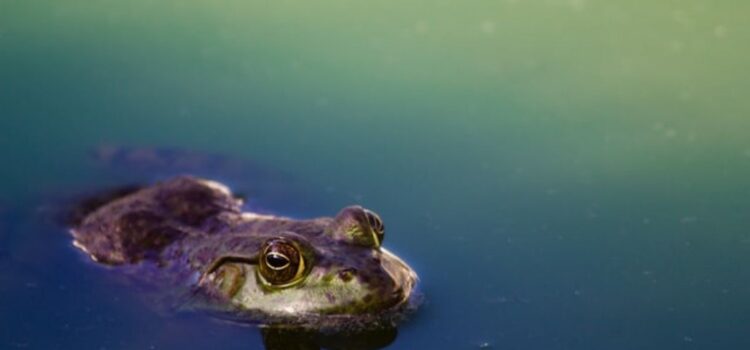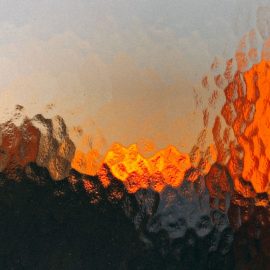

This article is an excerpt from the Shortform book guide to "The Sixth Extinction" by Elizabeth Kolbert. Shortform has the world's best summaries and analyses of books you should be reading.
Like this article? Sign up for a free trial here .
What are the causes of amphibian extinction? Which amphibian species have and are becoming extinct?
Amphibian extinction has come to the attention of scientists in the late 1980s. According to experts, however, we are not only witnessing the amphibian extinction event, we are also causing it.
Keep reading to learn about amphibian extinction, which species are affected, and what is causing it.
Amphibian Extinction
Amphibians such as frogs and toads have been around longer than mammals, birds, and even dinosaurs—yet today they’re on the leading edge of another mass extinction. Amphibians’ ancestors emerged from the water 400 million years ago and early forms of today’s amphibian orders appeared 250 million years ago.
“Amphibian” means having a “double life”—they start their lives in water and live on both water and land. Some frogs lay their eggs in streams while others lay them in vernal ponds; some make nests or carry their eggs on their bodies. Amphibian eggs have to stay wet in order to develop because they lack shells.
Amphibians live in a variety of habitats on every continent except Antarctica. Of the seven thousand species we’ve identified, the largest number live in tropical forests—however, one lives in the desert of Australia (the sandhill frog) and one can live above the Arctic Circle. Spring peepers and other North American frogs can revive in the spring after being frozen solid.
Today, amphibians are the most endangered of the six main classes of animals. Researchers started realizing frogs were in trouble in the late 1980s.
Golden Frogs Disappear
Panamanian golden frogs, native to the rainforests and higher-elevation cloud forests of western-central Panama, are less than two inches long and are bright yellow with dark brown spots. Their bright color warns of their extremely toxic skin—a single frog contains enough poison to kill twelve hundred mice.
Golden frogs were once common in the village of El Valle de Anton in central Panama, where they were considered a symbol of luck. The golden frog’s image appeared on lottery tickets and stores sold figurines of the frogs in all kinds of poses. The frogs could easily be seen and heard in the hills around town. Then they started disappearing.
An American graduate student studying the golden frogs in western Panama went back to the U.S. to write her dissertation—and when she returned sometime later to her study area, she couldn’t find any frogs at all. She set up a new study area farther east, where she found some frogs; at first, they seemed healthy and then they, too, vanished.
By 2002, there weren’t any golden frogs left to the west of El Valle; in 2004, dead frogs were seen in the village of El Cope, close to El Valle. Something was causing the population to crash. Concerned biologists in the U.S. and Panama decided to try to save the species by capturing some and raising them indoors at a small facility named the El Valle Amphibian Conservation Center (EVACC).
In 2008, citing a precipitous drop in amphibian populations in general, an article in the Proceedings of the National Academy of Sciences asked, “Are We in the Midst of the Sixth Mass Extinction?”
The paper’s authors, David Wake and Vance Vredenburg, concluded that, based on the rate of the amphibian extinction, a sixth catastrophic event is underway—which they attributed to “one weedy species”: humans.
Frogs disappeared not only from populated areas but also from untouched areas like the Sierras and the mountains of Central America. In central Costa Rica, rare species, as well as common ones, were vanishing. In Ecuador, a backyard toad disappeared in just a few years. Northeastern Australia’s most common frog, the southern day frog, also disappeared.
Blue Poison-Dart Frogs Die Out
Similarly, at the National Zoo in Washington, D.C., blue poison-dart frogs, which the zoo was raising, began dying. A pathologist found a fungus on their skin belonging to a group known as chytrids. Chytrid fungi are common, but this was a species never seen before. The fungus, which was named Bd (Batrachochytrium dendrobatidis), was raised in a lab and tested on some blue frogs—they died. Researchers discovered that Bd keeps frogs from properly absorbing electrolytes through their skin that are needed for heart function.
The fungus can continue to live on after it has killed all the frogs in an area, which means that if frogs bred successfully in captivity—including the golden frogs at the EVACC in Panama—were released back into the wild, they’d die. Researchers at the center still hope to release them back into the forest someday, but no one knows how it could be done successfully.
With no sign of stopping, Bd has spread from El Valle into South America and to Australia, New Zealand, and Tasmania. It’s spread outward from several points in the U.S.
The Real Cause of Amphibian Extinction
Amphibians aren’t the only animals rapidly losing ground. Animals are in trouble everywhere. Among those suffering steep declines are reef-building corals, sharks, rays, fresh-water mollusks, reptiles, mammals, and birds. While different animals are disappearing for seemingly different immediate reasons, in every case you can ultimately trace the cause to humans.
The fungus killing amphibians—Bd—is an example. It can move to a certain extent on its own. But it couldn’t have moved by itself to the corners of the world where it’s turned up. It may have been spread in the fifties and sixties with shipments of African frogs used in pregnancy tests (injecting these frogs with the urine of a pregnant woman causes them to lay eggs within hours). Or it could have been spread by the export of North American bullfrogs for food. Both of these types of frogs are commonly infected with Bd but aren’t sickened by it.

———End of Preview———
Like what you just read? Read the rest of the world's best book summary and analysis of Elizabeth Kolbert's "The Sixth Extinction" at Shortform .
Here's what you'll find in our full The Sixth Extinction summary :
- How humans have set in motion a sixth mass extinction
- The 5 mass extinction events that occurred over the last 500 million years
- Why human ingenuity might be able to save the human species from extinction






